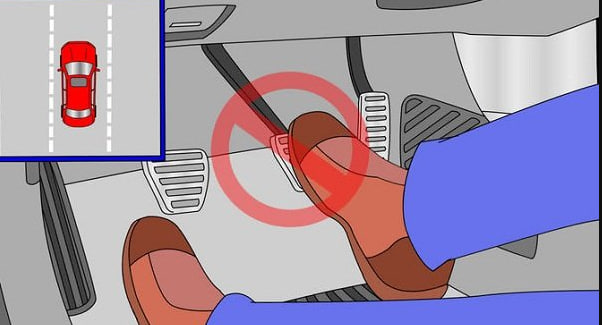The Ferrari California T: A Turbocharged Renaissance of Italian Grand Touring
The prancing horse emblem is synonymous with speed, luxury, and a certain undeniable Italian flair. For decades, Ferrari has captivated the automotive world with its high-performance sports cars and breathtaking designs. While often associated with track-focused machines, Ferrari has also cultivated a rich heritage of grand tourers – vehicles designed for comfortable and stylish long-distance journeys without sacrificing exhilarating performance. The Ferrari California T stands firmly within this tradition, representing a significant evolution for the model and a compelling entry point into the world of Ferrari ownership.

Introduced in 2014 as the successor to the original California, the California T marked a pivotal moment for the model line, most notably through the adoption of a turbocharged engine – a first for a modern Ferrari road car since the iconic F40. This shift wasn’t just about adhering to evolving emissions regulations; it was about enhancing the driving experience with a broader torque curve and improved responsiveness, while retaining the elegance and versatility that made the original California so appealing.
A Legacy of Open-Top Grand Touring
To truly appreciate the California T, it’s essential to understand the lineage it belongs to. The original Ferrari California, launched in 2008, was conceived as a more approachable and user-friendly Ferrari, targeting a slightly different demographic than its more hardcore stablemates. Its front-engine, rear-wheel-drive layout and retractable hardtop offered a unique blend of performance and practicality, making it an ideal companion for weekend getaways or cruising along scenic coastal roads.
The California T built upon this foundation, retaining the beloved retractable hardtop and the 2+2 seating configuration (albeit with limited rear passenger space, best suited for children or short trips). However, the “T” in its name signaled a fundamental change under the hood. The naturally aspirated 4.3-liter V8 of its predecessor was replaced by a smaller, more efficient, yet significantly more potent 3.9-liter twin-turbocharged V8 engine.
Design Evolution: Subtle Refinement and Enhanced Aerodynamics
Visually, the California T represented a subtle but significant step forward in design. While retaining the overall proportions of the original, the new model featured a more aggressive and contemporary aesthetic. The front fascia was redesigned with a wider grille and larger air intakes, contributing to improved engine cooling and a more assertive stance. The headlights were also updated, incorporating LED daytime running lights for a modern touch.
The side profile of the California T flowed elegantly, with sculpted lines and prominent air vents ahead of the rear wheels, which were not just for aesthetics but also served to channel airflow. The retractable hardtop, a key feature of the California lineage, seamlessly integrated into the car’s design, offering the best of both worlds: the open-air thrill of a convertible and the security and refinement of a coupe. The transformation from coupe to convertible took a mere 14 seconds, a testament to Ferrari’s engineering prowess.
At the rear, the California T featured a redesigned bumper with integrated quad exhaust pipes, a signature Ferrari design element. The taillights were also refined, further enhancing the car’s sophisticated appearance. Overall, the design of the California T was a successful evolution, retaining the elegance of its predecessor while injecting a dose of modern aggression and aerodynamic efficiency.
Related articles 01:
1. https://suvwars.com/the-pinnacle-of-prancing-horse-performance-exploring-the-ferrari-488-pista
2. https://suvwars.com/the-ferrari-812-superfast-a-symphony-of-speed-and-luxury
3. https://suvwars.com/review-of-audi-q7-2023-luxury-sports-car
4. https://suvwars.com/review-of-porsche-cayenne-2023
5. https://suvwars.com/ferrari-488-gtb-a-deep-dive-into-the-prancing-horses-turbocharged-marvel
The Heart of the Matter: Turbocharged Performance
The most significant change in the California T was undoubtedly its engine. The introduction of a twin-turbocharged V8 marked a strategic shift for Ferrari, embracing forced induction to deliver enhanced performance and improved fuel efficiency. The 3.9-liter unit produced a formidable 552 horsepower and a staggering 755 Nm of torque – a substantial increase over the naturally aspirated engine of the original California.
This newfound power translated into significantly improved performance figures. The California T could sprint from 0 to 100 km/h (0-62 mph) in a mere 3.6 seconds, and its top speed was an impressive 316 km/h (196 mph). However, the numbers only tell part of the story. The beauty of the turbocharged engine lay in its broad and accessible torque curve. Unlike naturally aspirated engines that require higher revs to unleash their full potential, the California T’s turbo V8 delivered a surge of power from low down in the rev range, making it incredibly responsive and effortless to drive in everyday situations.
Ferrari engineers meticulously tuned the engine and exhaust system to ensure that the California T retained the characteristic Ferrari sound. While the turbocharged engine had a slightly different sonic signature compared to its naturally aspirated predecessor, it still delivered a thrilling and evocative soundtrack, albeit with a deeper and more muscular tone.
Driving Dynamics: A Balance of Performance and Comfort
While the California T boasted impressive performance figures, it was designed to be more than just a straight-line speed machine. Ferrari engineers focused on creating a balanced and engaging driving experience that catered to both spirited driving and comfortable cruising. The car featured a sophisticated suspension system with adaptive dampers, allowing drivers to tailor the ride to their preferences and the road conditions.

The steering was precise and well-weighted, providing excellent feedback and allowing for confident cornering. The brakes were powerful and offered reassuring stopping power. The California T also benefited from Ferrari’s advanced electronic driver aids, including traction control and stability control systems, which helped to keep the car planted and under control, even when pushing the limits.
Despite its performance capabilities, the California T remained a comfortable and refined grand tourer. The ride quality was surprisingly compliant, even on less-than-perfect road surfaces, and the cabin was well-insulated from wind and road noise, especially with the hardtop in place. This duality of character – the ability to deliver exhilarating performance when desired while remaining comfortable and composed for long journeys – was a key aspect of the California T’s appeal.
Interior Design and Technology: A Blend of Luxury and Modernity
Stepping inside the Ferrari California T was an experience in itself. The cabin was meticulously crafted using high-quality materials, including supple leather, rich Alcantara, and genuine carbon fiber or aluminum accents, depending on the chosen specification. The design was elegant and driver-focused, with all the essential controls within easy reach.
Related articles 02:
1. https://suvwars.com/the-pinnacle-of-prancing-horse-performance-exploring-the-ferrari-488-pista
2. https://suvwars.com/top-5-suv-models-will-use-automatic-driving-technology
3. https://suvwars.com/review-bentley-bentayga-ewb-2023-sublime-luxury
4. https://suvwars.com/the-ferrari-f8-tributo-a-grand-finale-for-maranellos-v8-masterpiece
5. https://suvwars.com/review-of-audi-q7-2023-luxury-sports-car
The seats were comfortable and supportive, ideal for long drives. The 2+2 seating configuration offered a degree of practicality, although the rear seats were best suited for occasional use or for carrying luggage. The retractable hardtop ensured excellent headroom in coupe mode, and the large windows provided good visibility.
The California T also featured a modern infotainment system with a touchscreen display, providing access to navigation, audio, and other vehicle settings. While not the most cutting-edge system available at the time, it was functional and integrated well into the dashboard design. The car also offered various customization options, allowing owners to personalize their vehicle to their exact tastes.
Market Position and Appeal
The Ferrari California T occupied a unique position in the Ferrari lineup, serving as a more accessible and versatile entry point into the brand. It appealed to a broader range of buyers who appreciated the prestige and performance of a Ferrari but also desired a car that was comfortable and practical enough for everyday use or weekend getaways.
Its main competitors in the luxury grand tourer segment included models like the Aston Martin Vantage, the Porsche 911 Turbo Cabriolet, and the Mercedes-AMG GT C Roadster. The California T offered a distinct blend of Italian flair, exhilarating performance, and the unique appeal of a retractable hardtop, setting it apart from its rivals.
The California T’s Lasting Legacy
The Ferrari California T represented a significant step forward for the California model line, successfully embracing turbocharging to deliver enhanced performance and efficiency without sacrificing the elegance and versatility that made the original so popular. It demonstrated Ferrari’s willingness to adapt to changing market demands and regulations while staying true to its core values of performance and luxury.
While the California T has since been succeeded by the Ferrari Portofino and its evolution, the Portofino M, it remains a highly desirable and respected model in the Ferrari stable. Its combination of turbocharged power, elegant design, retractable hardtop, and comfortable driving dynamics makes it a compelling choice for those seeking a true Italian grand tourer that can deliver both thrilling performance and refined cruising. The “T” in its name signifies not just a technological advancement but a turbocharged renaissance for this beloved Ferrari model, solidifying its place in the brand’s rich history.













